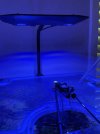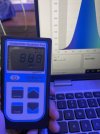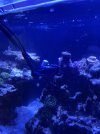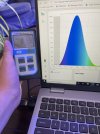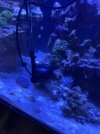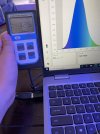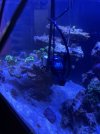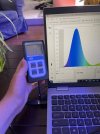Hey everyone,
Here is the response to the email I sent them about the different readings.
Gerry
Here is the info they sent me. Not sure if it copied over well.
Hello Gerardo,
Thanks for reaching out to us and bringing forward your concerns! We have absolute faith in our product and hope that you will too. PARwise is a very modern lightmeter using the latest digital technologies. – Apogee are using silicone photodiodes which is a rather older technology. This is why PARwise is able to read spectrum too.
Apogee have many different models of PAR meter and sensors, all suitable for different jobs and installations. Quantum Sensors - PAR Meters | Apogee Instruments (
https://www.apogeeinstruments.com/quantum/) Some models are better suited to other jobs than others. PARwise has been built to be able to used in any lighting situation as it is a digital sensor, not analogue and as such doesn’t suffer some of the drawbacks when using analogue sensors and physical filters. Looking at the spec of the MQ200 – this is designed for measuring sunlight in open air and uses their original sensor which has an interesting sensitivity range – it’s not designed for use under water and as such, doesn’t have any correction factor for underwater use. Apogee themselves recommend that users shouldn’t use that model for measuring LEDs – just in case your light was LED. Note we do have two calibrations in PARwise, in air and underwater mode.
We have several models of Apogee and none of them match each other. I’ve done a little experiment on my tank at home to show this. Measurements were taken under a Kessil A80 with the lens dome touching the surface of the water
MQ-200 - 730
MQ-510 – 1065
PARwise – 911
Of course in this instance and light source / spectrum / distance – the PARwise is measuring between the two apogees and higher than the MQ-200 I have here. I have also measured my Apogee against one at an LFS and the results did differ, but I’m unsure of the variance.
View attachment 47968View attachment 47967View attachment 47969
Something to note is that if you have the two sensor heads level – the PARwise sensor is likely lower due to the position of the actual light receiving sensor in the body – I know the apogee units are different sizes but where the actual photodiode is inside their body I’m unsure as I’ve never taken a dome apart – the sensor in ours is approximately 1/3rd down from the highest point on the sensor – these minute differences can make up large differences in results if you adjust the height, especially under brighter situations. I’d propose that the PARwise needs to be held a little bit higher than the Apogee ones. In some pictures, the sensor heads are not on an even plane or position with the Apogee sensor head being higher than PARwise – the height difference can account for several percent alone as water depth and position under the light can make big differences.
PARwise are individually calibrated against a laboratory spectrometer that is itself calibrated by an external accredited lab regularly to not only check their spectral response, but sensitivity to photon flux density. We can absolutely trust in our results.
The final kicker and thing to explain with PARwise is that it’s able to selectively ignore spectra – This is because it can see and measure the colour of light. This means we only truly report light that falls between 400nm and 700nm. Apogee’s sensors will report light outside of the PAR range and as a result, skew their results if it’s there – e.g infrared/near UV. You can check this by using it on a blacklight source on it vs PARwise – there should be only a small amount of PAR which we see as visible ‘purple’ light. The Apogee’s tend to report more (as is shown on their response curve on their website). See below for an example using a UV Blacklight flashlight..
View attachment 47965View attachment 47966View attachment 47964
The over-representation can also be seen and explained in their spectral response curves here:
https://www.apogeeinstruments.com/aquarium-par-meters/ (
https://www.apogeeinstruments.com/aquarium-par-meters/). We are selectively ignoring parts of the spectrum that don’t scientifically meet the description of PAR (400nm to 700nm range). The attached PARwise graph is from where I did the same experiment as above with PARwise. You can see a huge spike of near UV light (383nm reported) – but it’s only showing 76 PAR because only a small portion falls over 400nm.
The final point to make is, that no two light meter models will ever give you the exact same results! This is due to manufacturing and calibration tolerances. In science, we always need to state to the make, model and any calibration data/standard so it can be replicated more accurately. If you are trying to direct compare with a different manufacturer’s model with a friend, if you accurately measure the distance and light levels across varying spectra and distances with those two devices, you may be able to work out the difference between yours and his meter and make a comparison calculation – note that this may not work for another MQ200/PARwise combo due to manufacturing tolerance differences. We know our device result repeatability is very tight – so when comparing against another PARwise you’ll get an extremely close result and no comparison calculation is required.
Whilst of course I don’t mean to throw a shadow on Apogee’s products they work and have reasons for their results given – the results must be understood and compared with the same models only (I.E MQ200 vs MQ200) for accurate comparisons.
I hope this goes some way to explain the differences you’ll see when using an Apogee vs PARwise and the pitfalls there can be when comparing different models of light meters! At the end of the day, these products are there for you to tune your lighting but don’t forget nutrient availability, water parameter stability and individual coral health conditions are big factors in a corals ability to adapt to different light cycles, spectra and peak brightnesses.
I hope this goes some way to explain the differe
nces in light readings when comparing other light meters.
Kindest regards,
Craig
Seneye Support Team


